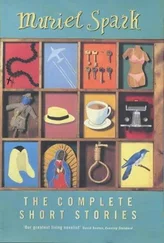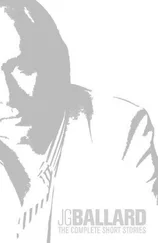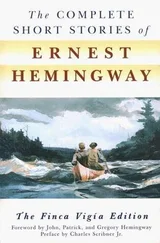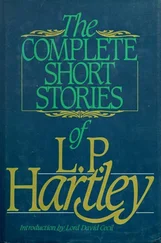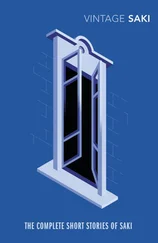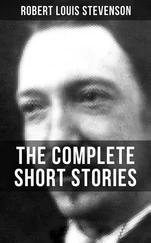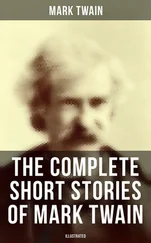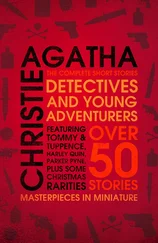What we saw after Raymond Mayo pulled the tape I tried not to think about. With its pedestal the statue was twelve feet high. Three spindly metal legs, ornamented with spikes and crosspieces, reached up from the plinth to a triangular apex. Clamped on to this was a jagged structure that at first sight seemed to be an old Buick radiator grille. It had been bent into a rough U five feet across, and the two arms jutted out horizontally, a single row of sonic cores, each about a foot long, poking up like the teeth of an enormous comb. Welded on apparently at random all over the statue were twenty or thirty filigree vanes.
That was all. The whole structure of scratched chromium had a blighted look like a derelict antenna. Startled a little by the first shrill whoops emitted by the statue, I began my speech and was about halfway through when I noticed that Lorraine Drexel had left her seat beside me. People in the audience were beginning to stand up and cover their ears, shouting to Raymond to replace the acoustic drape. A hat sailed through the air over my head and landed neatly on one of the sonic cores. The statue was now giving out an intermittent high-pitched whine, a sitar-like caterwauling that seemed to pull apart the sutures of my skull. Responding to the boos and protests, it suddenly began to whoop erratically, the horn-like sounds confusing the traffic on the far side of the square.
As the audience began to leave their seats en masse I stuttered inaudibly to the end of my speech, the wailing of the statue interrupted by shouts and jeers. Then Carol tugged me sharply by the arm, her eyes flashing. Raymond Mayo pointed with a nervous hand.
The three of us were alone on the platform, the rows of overturned chairs reaching across the square. Standing twenty yards from the statue, which had now begun to whimper plaintively, was Lorraine Drexel. I expected to see a look of fury and outrage on her face, but instead her unmoving eyes showed the calm and implacable contempt of a grieving widow insulted at her husband’s funeral. As we waited awkwardly, watching the wind carry away the torn programme cards, she turned on a diamond heel and walked across the square.
No one else wanted anything to do with the statue, so I was finally presented with it. Lorraine Drexel left Vermilion Sands the day it was dismantled. Raymond spoke briefly to her on the telephone before she went. I presumed she would be rather unpleasant and didn’t bother to listen in on the extension.
‘Well?’ I asked. ‘Does she want it back?’
‘No.’ Raymond seemed slightly preoccupied. ‘She said it belonged to us.’
‘You and me?’
‘Everybody.’ Raymond helped himself to the decanter of scotch on the veranda table. ‘Then she started laughing.’
‘Good. What at?’
‘I don’t know. She just said that we’d grow to like it.’
There was nowhere else to put the statue so I planted it out in the garden. Without the stone pedestal it was only six feet high. Shielded by the shrubbery, it had quietened down and now emitted a pleasant melodic harmony, its soft rondos warbling across the afternoon heat. The sitar-like twangs, which the statue had broadcast in the square like some pathetic love-call from Lorraine Drexel to her dead lover, had vanished completely, almost as if the statue had been rescored. I had been so stampeded by the disastrous unveiling that I had had little chance to see it and I thought it looked a lot better in the garden than it had done in Vermilion Sands, the chromium struts and abstract shapes standing out against the desert like something in a vodka advertisement. After a few days I could almost ignore it.
A week or so later we were out on the terrace after lunch, lounging back in the deck chairs. I was nearly asleep when Carol said, ‘Mr Hamilton, I think it’s moving.’
‘What’s moving?’
Carol was sitting up, head cocked to one side. ‘The statue. It looks different.’
I focused my eyes on the statue twenty feet away. The radiator grille at the top had canted around slightly but the three stems still seemed more or less upright.
‘The rain last night must have softened the ground,’ I said. I listened to the quiet melodies carried on the warm eddies of air, and then lay back drowsily. I heard Carol light a cigarette with four matches and walk across the veranda.
When I woke in an hour’s time she was sitting straight up in the deck chair, a frown creasing her forehead.
‘Swallowed a bee?’ I asked. ‘You look worried.’
Then something caught my eye.
I watched the statue for a moment. ‘You’re right. It is moving.’
Carol nodded. The statue’s shape had altered perceptibly. The grille had spread into an open gondola whose sonic cores seemed to feel at the sky, and the three stem-pieces were wider apart. All the angles seemed different.
‘I thought you’d notice it eventually,’ Carol said as we walked over to it. ‘What’s it made of?’
‘Wrought iron – I think. There must be a lot of copper or lead in it. The heat is making it sag.’
‘Then why is it sagging upwards instead of down?’
I touched one of the shoulder struts. It was springing elastically as the air moved across the vanes and went on vibrating against my palm. I gripped it in both hands and tried to keep it rigid. A low but discernible pulse pumped steadily against me.
I backed away from it, wiping the flaking chrome off my hands. The Mozartian harmonies had gone, and the statue was now producing a series of low Mahler-like chords. As Carol stood there in her bare feet I remembered that the height specification we had given to Lorraine Drexel had been exactly two metres. But the statue was a good three feet higher than Carol, the gondola at least six or seven across. The spars and struts looked thicker and stronger.
‘Carol,’ I said. ‘Get me a file, would you? There are some in the garage.’
She came back with two files and a hacksaw.
‘Are you going to cut it down?’ she asked hopefully.
‘Darling, this is an original Drexel.’ I took one of the files. ‘I just want to convince myself that I’m going insane.’
I started cutting a series of small notches all over the statue, making sure they were exactly the width of the file apart. The metal was soft and worked easily; on the surface there was a lot of rust but underneath it had a bright sappy glint.
‘All right,’ I said when I had finished. ‘Let’s go and have a drink.’
We sat on the veranda and waited. I fixed my eyes on the statue and could have sworn that it didn’t move. But when we went back an hour later the gondola had swung right round again, hanging down over us like an immense metal mouth.
There was no need to check the notch intervals against the file. They were all at least double the original distance apart.
‘Mr Hamilton,’ Carol said. ‘Look at this.’
She pointed to one of the spikes. Poking through the outer scale of chrome were a series of sharp little nipples. One or two were already beginning to hollow themselves. Unmistakably they were incipient sonic cores.
Carefully I examined the rest of the statue. All over it new shoots of metal were coming through: arches, barbs, sharp double helixes, twisting the original statue into a thicker and more elaborate construction. A medley of half-familiar sounds, fragments of a dozen overtures and symphonies, murmured all over it. The statue was well over twelve feet high. I felt one of the heavy struts and the pulse was stronger, beating steadily through the metal, as if it was thrusting itself on to the sound of its own music.
Carol was watching me with a pinched and worried look.
‘Take it easy,’ I said. ‘It’s only growing.’
We went back to the veranda and watched.
Читать дальше

